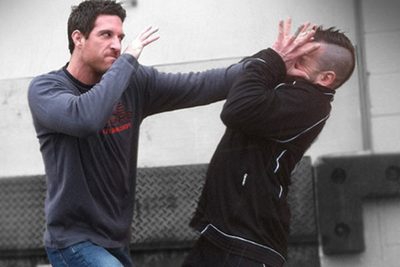The concept of self-defense of civil rights was first clearly emphasized in Art. 14 of the new Civil Code. Previous legislation provided for only individual cases of the implementation of this opportunity. 
The concept of civil law
This institution includes a set of legal rules governing property, as well as a number of unrelated personal relationships of people. The basic principles of civil law (legal equality, property independence, independence and others) form the most favorable conditions for satisfying private interests and needs. They also ensure the normal development of socio-economic relations. The civil law system involves not only the unity of norms, but also their differentiation into separate institutions and sub-sectors. Classification is based on a certain interconnectedness of norms. The civil law system includes institutions to ensure the implementation of interests, control over compliance with the law. In the structure there are directions in the framework of which prevention and suppression of violations are carried out.
Protection and self-defense of civil rights
These categories are guaranteed by the Constitution, state and laws. The concept of civil law provides for various opportunities and responsibilities of entities. In particular, the norms enshrined special measures to ensure the safety of freedoms and interests of individuals.
Main methods
Protection of civil law involves the use of special measures. They are enshrined in law. These include:
- Coercive measures.
- Self-defense of civil rights.
- Operational Measures.
Self-defense is the actual actions that a person takes to protect his right. Most often, such measures are applied in the framework of property relations. Intensity and methods must be commensurate with the violation. The main methods of self-defense of civil rights include actions when urgent need and necessary defense. 
Previous revision of the Civil Code
Article 448 of the Code of 1964 stipulated that the damage that was caused during the necessary defense is not subject to compensation. This situation occurred if its limit was not exceeded. In Art. 449 states that damage caused by emergency must be compensated by the person who caused it. At the same time, it was stipulated that, taking into account the circumstances, the court may impose a penalty on the third party in whose interests the given action was committed, or release him and the offender from liability in whole or in part.
New legislation
In Art. 14 of the current Civil Code provides more opportunities than in the previous edition. In accordance with it, three conditions will be sufficient for exemption from liability for harm:
- Self-defense of civil rights must be proportionate to violations.
- The method used by a person for defense cannot go beyond the scope of the actions necessary for its application.
- A citizen who defends his right is its undisputed owner.
The absence of at least one of these conditions allows the person against whom the defense is directed to demand compensation for the damage caused. 
Example
The above signs meet such a method of securing obligations as retention. This technique is highlighted in the Civil Code along with others.The essence of the retention is that the creditor who has the thing to transfer it to the debtor or to the person indicated by him can keep it in case the debtor has not fulfilled the obligation to pay it or if the costs related to it have not been reimbursed . Such self-defense of civil rights can be applied by a commission agent, to whom the principal does not deduct remuneration.
Necessary defense
She acts as one of the ways of self-defense of rights. According to Art. 1066 Civil Code is not subject to compensation for damage caused by the necessary defense, if its limit has not been exceeded. In other words, self-defense of civil rights in this case causes harm to the violator, but does not entail the responsibility of the defender. This is because it is recognized as permissible. The use of necessary defense is mainly governed by the principles of civil law. Its content in the norms is revealed most widely. Along with this, such self-defense of civil rights is regulated by the Criminal Code. In criminal law, action is considered necessary defense, although it has signs of a crime, but is not recognized as such. In the Civil Code, it also includes an action that falls under the concept of civil violation of rights, but does not entail the application of measures of responsibility. 
Proportionality of action and violation
Defense is deemed necessary if its limits are not exceeded. Such actions protect public and state interests, as well as the rights and freedoms of third parties. In this case, the necessary defense should be aimed only at the offender, and not at his close or relatives. Exceeding the limits may relate to the choice of a method of protection, its intensity, timeliness. With the necessary defense, there may be a mismatch between the methods of danger and the nature of the violation. However, in any case, when assessing the legitimacy of actions, it is necessary to take into account the capabilities and strength of the defender, the excitement that appears in a critical situation.
Legal implications
From the point of view of the Civil Code, in the implementation of the necessary defense, the defender is exempted from liability to compensate the inflicted damage. However, if the limits established by law are exceeded, the situation will be treated differently. In this case, we will talk about unlawful actions of the defender, which entail appropriate responsibility. But in this situation, the degree of danger, the nature of the violation and other circumstances will be taken into account. 
Urgent need
By actions committed in such conditions, it should be understood measures taken by a person to prevent a danger threatening the causer of damage or other persons, if in these circumstances it cannot be eliminated by other means. This definition is given in Art. 10767 Civil Code. The above actions are considered permissible if the damage caused is recognized as less significant than the prevented harm. As well as in the application of the necessary defense, measures when absolutely necessary are taken not only as self-defense, but also to ensure the safety of public and state interests.
Causes of situations
Danger when absolutely necessary arises due to malfunctioning mechanisms, natural disasters, a special condition of a person (for example, with illness) and so on. It may also occur in the event of criminal conduct by a person. This, for example, may be causing damage to property of citizens in the process of prosecuting the offender. 
Action Features
They consist in the fact that, under extreme conditions, the authorized person is forced to use the funds that are associated with the damage. In some cases, harm may be a required measure to prevent a great danger.In other cases, the damage may act as a concomitant phenomenon and may not occur. Here you should understand the difference: under the conditions of necessary defense, damage is caused to the attacker, and in case of emergency, to a third party. In accordance with the law, the responsibility for compensation in the second case lies with the citizen in whose interests the action was committed. For example, a man, saving a drowning man in a river, used a boat, having previously thrown other things out of it into the water. The court assigns the obligation to indemnify property damage to a citizen who bathed in a dangerous place.
